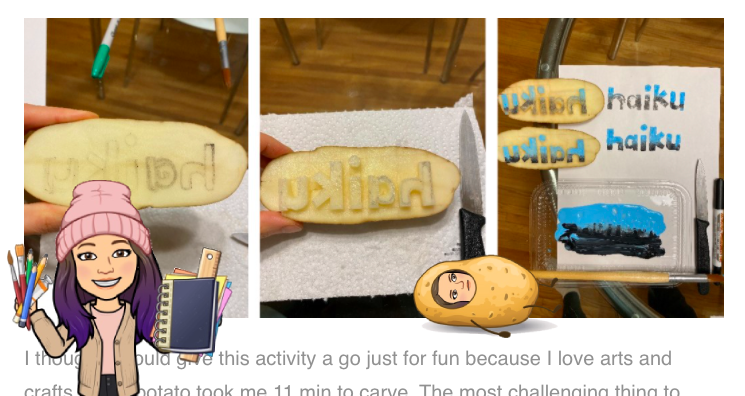 Link to Ying’s entry: https://blogs.ubc.ca/2021etec540/2021/02/04/task-4/
Link to Ying’s entry: https://blogs.ubc.ca/2021etec540/2021/02/04/task-4/
I’ve enjoyed reading through Ying’s reflections on her writing process. I identify with a lot of what she has said: writing is reserved for special occasions and special recipients because typing is much, much faster and more efficient. These days, when I receive a handwritten card, the object itself holds as much value as what is written inside. I hang up or keep in scrapbooks cards my students have written me because the thought of them spending time to write neatly means a lot, in addition to the sweet messages.
The hand simply cannot keep up with the thoughts spilling out and it can get frustrating to have to slow my ideas down (and risk losing them). I am reminded of an email I recently received from a concerned parent. She was worried about her son’s writing output: he seems to really hate writing, and any task that require fine motor presents a difficult challenge for him. Her son is extremely bright, and oral speech definitely trumps his written output (the richness of his ideas, his personality, clarity…are all better conveyed in person). I replied to her reassuring her that it’s not too great of a concern that her son’s penmanship is so poor. While it is true that there are times in class where writing by hand is unavoidable, we now live in an age where it is much more common to hand in typed work. With COVID-19, our school has moved towards bringing your own devices, which has helped students like him greatly. I find that students tend to write more when they are allowed to type. I can see how their experiences mirrored Ying’s when completing this task.
Ying also did the potato printing and right away I noticed two big differences between our experiences. First, she carved the entire word onto one potato (something I hadn’t even thought of doing!), and secondly, her craftsmanship is much better than mine! I love the font that she ended up carving. The words are neat and clear when stamped onto paper. I did each letter separately to try and mirror the printing press, but as a result my letters were not as uniformed as hers. I can see how a design like Ying’s might’ve been used for logos or mastheads, or words/names that are reproduced often.
Furthermore, Ying discusses the possibility of another communication remediation as we cycle back to oral communication through the rise of speech to text technologies that have been rapidly improving the last few years. Despite this, she recognizes there are remnants of old technology (e.g., the need to say “comma” to preserve punctuation), as addressed by Bolter (2001). While it is true that we may be walking back towards more oral forms of communication (e.g., audio messages in WhatsApp, video messages through private Instagram messaging), I am also sceptical whether we can ever fully move towards these audio/visual forms of communication, or whether we will just end up sitting somewhere in the middle.
I remember using Dragon Speech with a student back in 2017, and it was not the best experience. Despite having this technology that could greatly help him with written output (to put it in context, it once took him 45mins. to write out “peb” when spelling pebble. At the time, he had an undiagnosed learning disability), he was reluctant to use the iPad. This year, I have a student with similar challenges in writing, and while he is willing to use Notepad with autocorrect to help assist with writing, he refuses to use any speech to text apps. This is a pattern I’ve noticed with a lot of my students: this reluctance to commit to anything audio or visual. I wonder if this is a generational thing (e.g., my mom has no qualms with using audio messaging on WhatsApp while I prefer CC on all the videos so I can ‘read’ them without sound), or if there’s something about word processing that remains to be a preferred medium to communicate with.
References
Bolter, Jay David. (2001). Writing space: Computers, hypertext, and the remediation of print [2nd edition]. Mahwah, NJ: Lawrence Erlbaum.